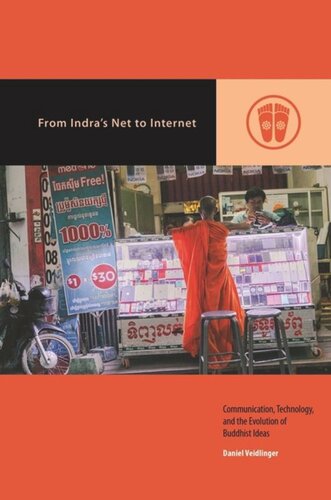

Most ebook files are in PDF format, so you can easily read them using various software such as Foxit Reader or directly on the Google Chrome browser.
Some ebook files are released by publishers in other formats such as .awz, .mobi, .epub, .fb2, etc. You may need to install specific software to read these formats on mobile/PC, such as Calibre.
Please read the tutorial at this link: https://ebookbell.com/faq
We offer FREE conversion to the popular formats you request; however, this may take some time. Therefore, right after payment, please email us, and we will try to provide the service as quickly as possible.
For some exceptional file formats or broken links (if any), please refrain from opening any disputes. Instead, email us first, and we will try to assist within a maximum of 6 hours.
EbookBell Team

4.0
6 reviewsIn this sweeping and ambitious intellectual history, Daniel Veidlinger traces the affinity between Buddhist ideas and communications media back to the efflorescence of Buddhism in the Axial Age of the mid-first millennium BCE. He uses both communications theory and the idea of convergent evolution to show how Buddhism arose in the largely urban milieu of Axial Age northeastern India and spread rapidly along the transportation and trading nodes of the Silk Road, where it appealed to merchants and traders from a variety of backgrounds. Throughout, he compares early phases of Buddhism with contemporary developments in which rapid changes in patterns of social interaction were also experienced and brought about by large-scale urbanization and growth in communication and transportation. In both cases, such changes supported the expansive consciousness needed to allow Buddhism to germinate. Veidlinger argues that Buddhist ideas tend to fare well in certain media environments; through a careful analysis of communications used in these contexts, he finds persuasive parallels with modern advances in communications technology that amplify the conditions and effects found along ancient trade routes.
From Indra’s Net to Internet incorporates historical research as well as data collected using computer-based analysis of user-generated web content to demonstrate that robust communication networks, which allow for relatively easy contact among a variety of people, support a de-centered understanding of the self, greater compassion for others, an appreciation of interdependence, a universal outlook, and a reduction in emphasis on the efficacy of ritual—all of which lie at the heart of the Buddha’s teachings. The book’s interdisciplinary approach should appeal to those interested in not only Buddhism, media studies and history, but also computer science, cognitive science, and cultural evolution.